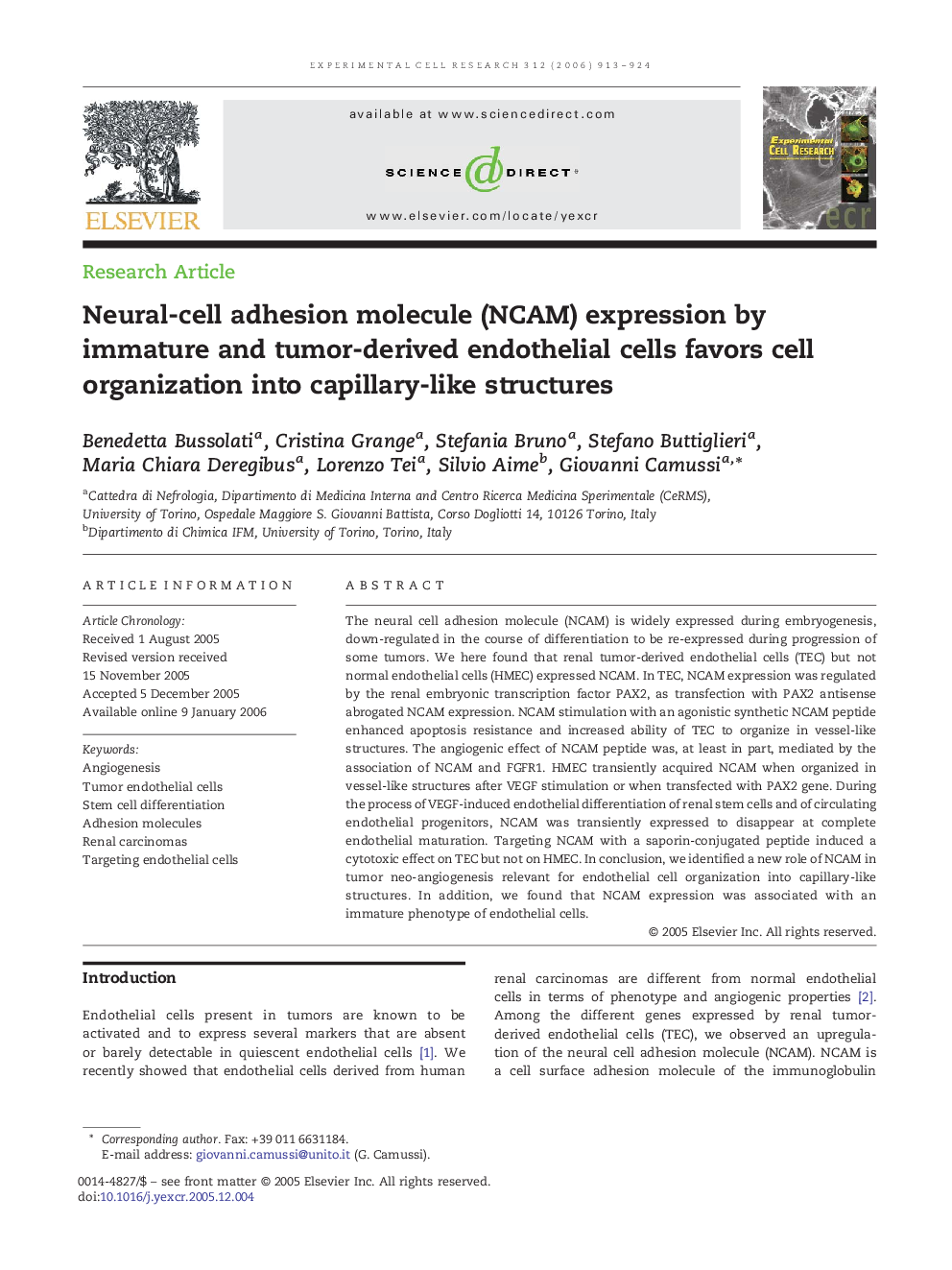| کد مقاله | کد نشریه | سال انتشار | مقاله انگلیسی | نسخه تمام متن |
|---|---|---|---|---|
| 2132396 | 1086687 | 2006 | 12 صفحه PDF | دانلود رایگان |

The neural cell adhesion molecule (NCAM) is widely expressed during embryogenesis, down-regulated in the course of differentiation to be re-expressed during progression of some tumors. We here found that renal tumor-derived endothelial cells (TEC) but not normal endothelial cells (HMEC) expressed NCAM. In TEC, NCAM expression was regulated by the renal embryonic transcription factor PAX2, as transfection with PAX2 antisense abrogated NCAM expression. NCAM stimulation with an agonistic synthetic NCAM peptide enhanced apoptosis resistance and increased ability of TEC to organize in vessel-like structures. The angiogenic effect of NCAM peptide was, at least in part, mediated by the association of NCAM and FGFR1. HMEC transiently acquired NCAM when organized in vessel-like structures after VEGF stimulation or when transfected with PAX2 gene. During the process of VEGF-induced endothelial differentiation of renal stem cells and of circulating endothelial progenitors, NCAM was transiently expressed to disappear at complete endothelial maturation. Targeting NCAM with a saporin-conjugated peptide induced a cytotoxic effect on TEC but not on HMEC. In conclusion, we identified a new role of NCAM in tumor neo-angiogenesis relevant for endothelial cell organization into capillary-like structures. In addition, we found that NCAM expression was associated with an immature phenotype of endothelial cells.
Journal: Experimental Cell Research - Volume 312, Issue 6, 1 April 2006, Pages 913–924